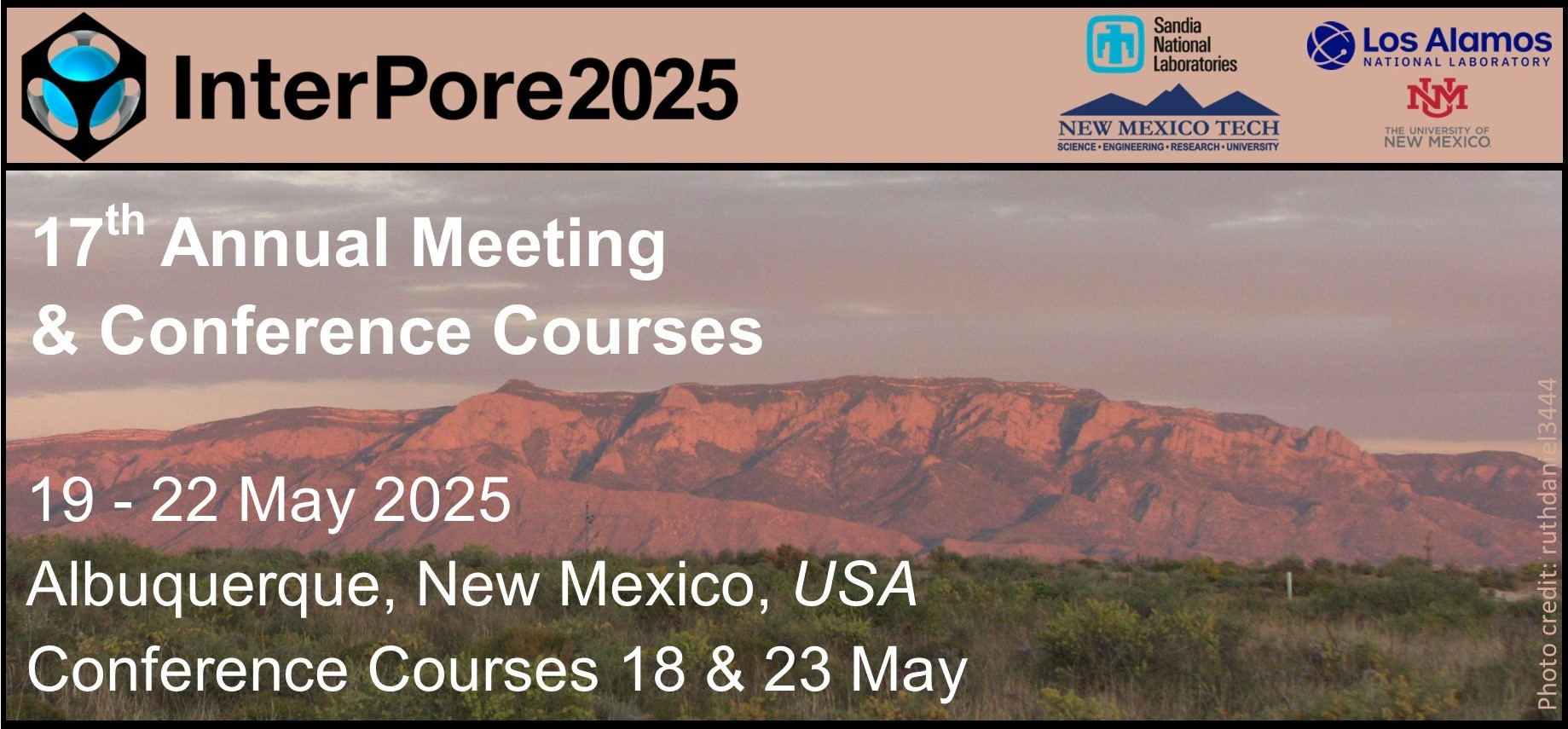(MS01) Porous Media for a Green World: Energy & Climate

Lead Organizer: Maartje Boon - University of Stuttgart, Germany
- Adedapo Awolayo - McMaster University, Canada
- Lauren Beckingham - Auburn University, USA
- Sharon Ellman - University of Ghent, Belgium
- Anna Herring - University of Tennessee, USA
- Takeshi Kurotori - Imperial College, UK
- Prakash Purswani - Los Alamos National Lab, USA
- Kamaljit Singh - Heriott Watt University, UK
- Yuhang Wang - China University of Geosciences, China
Porous media science is set to play a key role in the transition to renewable energy sources. Given that fossil fuels will remain a significant part of the energy mix in the foreseeable future, CO2 capture and subsurface storage will be essential for both carbon capture and storage (CCS) projects and negative emissions strategies like Bio-Energy with CCS (BECCS). Beyond large-scale carbon storage, innovative uses of porous media must be developed, including subsurface energy storage systems to address renewable energy intermittency, and advanced capture technologies in engineered systems and reactive natural rocks. These technologies also involve reactive transport processes for energy storage. Additionally, geothermal energy production is expected to contribute more to the future energy mix. In all these applications, safety and risk assessments are crucial for addressing societal concerns such as induced seismicity, surface subsidence, and uplift. In this session, we invite contributions on all aspects of the utilization of porous media for a sustainable energy future.
Solicited Speakers:
- Sophie Roman - University of Orléans, France: Wettability alteration of microfluidic devices by in situ plasma
- Sojwal Manoorkar - University of Ghent, Belgium: From natural gas storage to hydrogen storage: Microscopic flow dynamics of hydrogen versus methane in fractured reservoir rock
- Samuel Jackson - CSIRO, Australia: Real time micro-CT imaging of gas-gas mixing in the presence of brine
- Robin Zhao - McMaster University, Canada: Dynamics of Ostwald ripening in underground hydrogen storage
- Qingyun Li - Stony Brook University, USA: Redox reactions in near-wellbore tight rocks during gas storage
(MS02) Porous Media for a Green World: Water & Agriculture
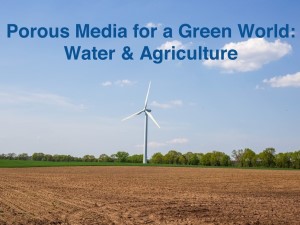
Lead Organizer: Milad Aminzadeh - Institute of Geo-Hydroinformatics, Hamburg University of Technology, Germany
- Minsu Kim - University of Graz, Austria
- Sahar Bakhshian - Rice University, USA
- Kathleen Smits - Southern Methodist University, USA
- Nima Shokri - Hamburg University of Technology, Germany
Sustainable use of soil and water resources is crucial to preserve healthy terrestrial ecosystems and maintaining food security. Many of the scientific and technical challenges related to these issues hinge on understanding, controlling and optimizing processes that involve the multiscale dynamics of water and nutrients in the soil-plant system, arguably the porous medium ‘par excellence’. With this theme in mind, this mini-symposium aims to bring together contributions on the physics, chemistry and biology of porous media with emphasis on applications to the ecohydrology and biogeochemistry of ecosystems. Fundamental research on these interdisciplinary topics will provide guidance and novel solutions to improve human actions on sustainable natural resource management, and reduce their potential negative impacts. Of particular interest are long-lasting environmental repercussions of water and soil management and the elements of irreversibility on the soil characteristics, particularly in relation to soil degradation and salinization, groundwater dynamics, carbon and nutrient retention, which in turn affect plant productivity and ultimately ecosystem resilience, soil health and human welfare. Also, we welcome contributions toward optimal land-use management for sustainable use of terrestrial environments and quantitative analysis of the effectiveness of applied human strategies on ecosystem management for food and water supply security.
(MS03) Flow, transport and mechanics in fractured porous media
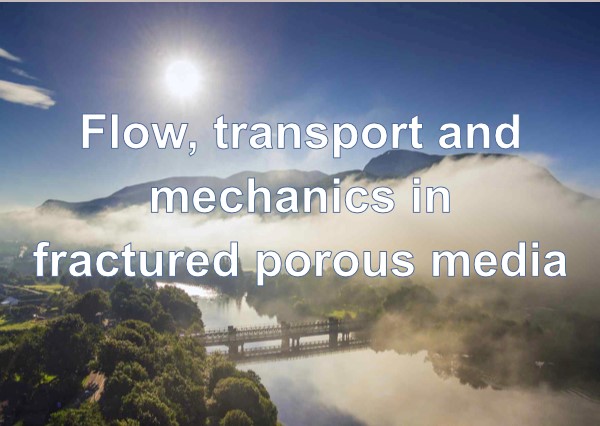
Lead Organizer: Hamid Nick - Technical University of Denmark, Denmark
- Laura Pyrak-Nolte - Purdue University, USA
- Teeratorn Kadeethum - Sandia National Laboratories, USA
- Hui Wu - Peking University, China
Understanding the complexities of flow, (multiphase) transport, and mechanics in fractured porous media requires addressing the interactions between the fracture network, the (deformable) matrix, and the coupled THMC (Thermal, Hydraulic, Mechanical, and Chemical) processes. In fractured media, open fractures act as primary pathways for fluid flow, significantly impacting transport and mechanical behavior. The porous matrix also interacts with the fractures, influencing and being influenced by flow and transport processes. Changes in pressure, temperature, mechanical stress, and (bio)chemical reactions within both the matrix and fractures can alter the flow, transport, and mechanical properties of the medium, creating a dynamic system. These dynamic interactions can even modify fractures, causing slip or propagation.
This mini-symposium invites contributions on advances in mathematical and numerical modeling, analytical methods, laboratory experiments, and field studies related to flow, transport, (bio)chemical, mechanical, and coupled THMC processes in fractured porous media.
(MS04) Swelling and shrinking porous media
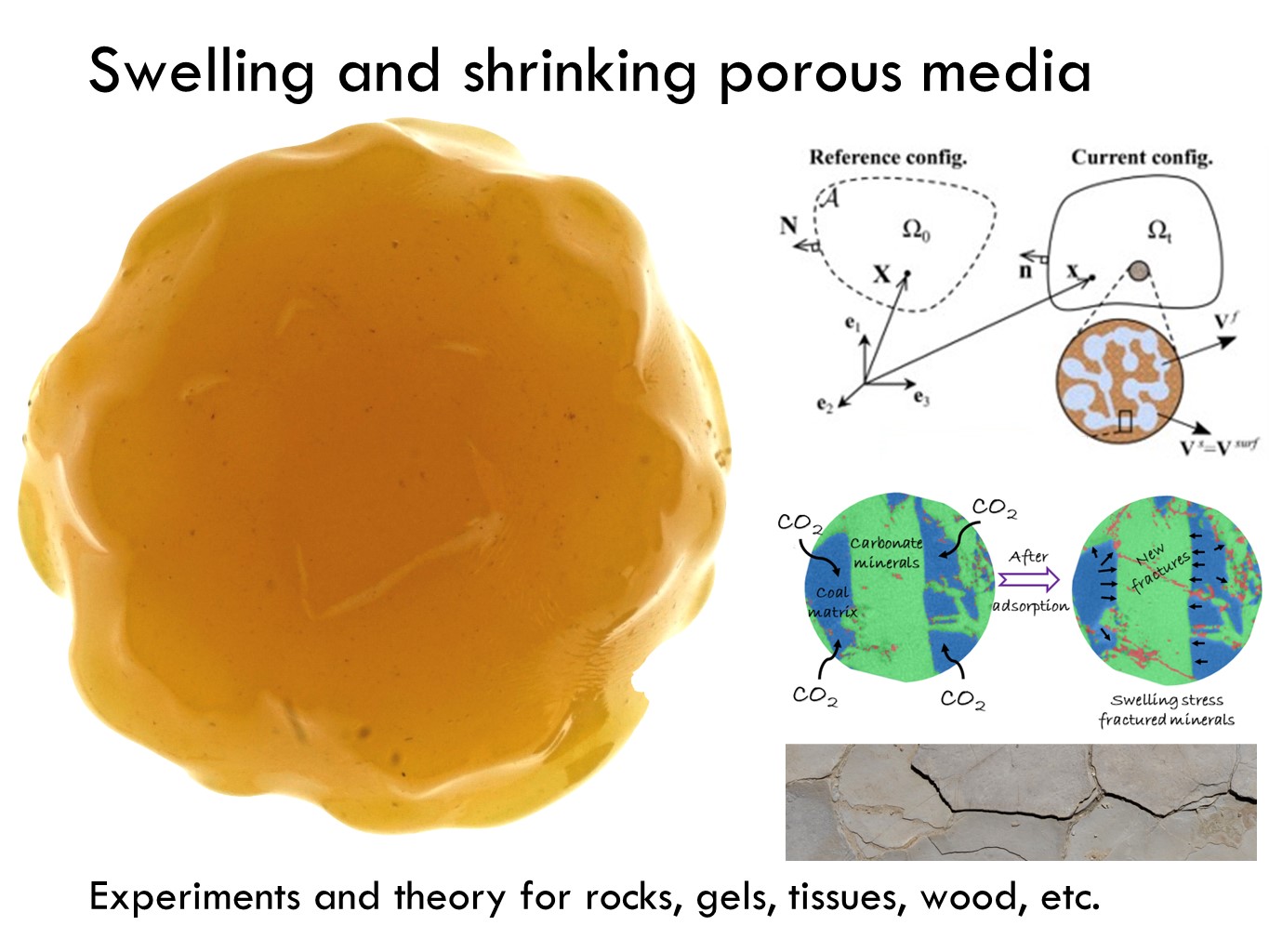
Lead Organizer: Yihuai Zhang - University of Glasgow, UK
- Muhammad Arif - Khalifa University, UAE
- Jean-François Louf - Auburn University, USA
- Yida Zhang - University of Colorado, Boulder, USA
Many porous media, from soils and clays to gels and tissues, will swell or shrink in response to thermal, mechanical, or chemical stimuli. The coupling between flow and deformation during swelling/shrinking can give rise to a variety of complex phenomena, including changes in mechanical or transport properties, changes in size or shape, and the formation of fracture or wrinkle patterns. The goal of this mini-symposium will be to highlight new experiments that provide direct visualization and characterization of these phenomena, as well as new theories that harness the output of these tools to better model flow and transport during swelling/shrinking. Particular emphasis will be given to studies that provide a direct comparison between theoretical predictions and experimental results.
(MS05) Microbial Dynamics in Porous Media: Advances in Biofilms, Biogeochemistry, and Biotechnology
.png)
Lead Organizer: Na Liu - University of Bergen, Norway
- Jarek V. Kwiecinski - California Institute of Technology, USA
- Kevin Roche - Boise State University, USA
- Veronica Morales - University of California at Davis, USA
- David Landa Marban - Norce research center, Norway
- Jacquelin Elizabeth Cobos Mora - University of Bergen, Norway
Microbial processes are integral to the form and function of numerous natural and engineered porous media, including soils, reservoirs, and water treatment technologies. To gain a deeper understanding of how microbes interact with porous media, it is essential to enhance our representation of key microbial processes, including biofilm formation, microbial motility, and metabolism.
This section aims to showcase the latest developments and challenges in understanding microbial processes in both the shallow and deep subsurface environments. We invite contributions from diverse disciplines to advance our understanding of microbial processes in water and porous media. Key areas of interest include: 1) Biofilm formation: Explore the dynamics, structure, and function of biofilms, their role in shaping the properties of porous media, and their role in improving water quality, groundwater systems, geological gas storage, and wastewater treatment; 2) Biogeochemical reactions: Investigate how microbially-mediated reactions affect the fate and transport of nutrients and contaminants; 3) Microbial risks in subsurface gas storage: Examine microbial processes associated with the storage of gases like carbon dioxide and hydrogen in subsurface porous media, including microbial-induced gas loss, bioclogging, and corrosion; 4) Novel biotechnology in environmental applications: Discuss how insights into microbial and biogeochemical processes can drive advancements in water treatment, biofiltration, and the remediation of contaminated groundwater and soils.
Solicited Speakers:
- Chaojie Cheng - Karlsruher Institut für Technologie, Germany: Pore-scale bio-geochemical reactions and their impact on reservoir properties in underground hydrogen storage
- Dianlei Feng - Tongji University, China: Laminar Vortex Dynamics in Pore-Scale MICP: A 3D LBM-FE-CA Numerical Model Analysis
- Madison Flint - University of Florida, USA: Microfluidic analysis of N2O cycling in karst aquatic systems: Linking hydrological, geochemical and microbiological processes
(MS06-A) Physics of multiphase flow in diverse porous media
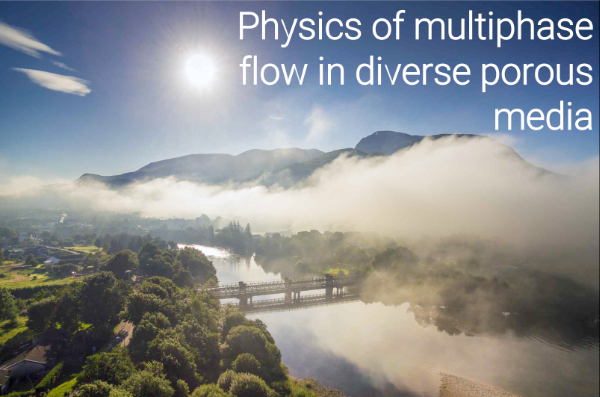
Lead Organizer: Chao-Zhong Qin - Chongqing University, China
- Ying Gao - Shell, The Netherlands
- Li Chen - Xi’an Jiaotong University, China
- Masa Prodanovic - The University of Texas at Austin, USA
- Yu Jing - University of New South Wales, Australia
- Hassan Mahani - Sharif University of Technology, Iran
- Saman Aryana - University of Wyoming, USA
- Hossein Hejazi - University of Calgary, Canada
- Rui Wu - Shanghai Jiaotong University, China
Multiphase flow in porous media is significant to many applications ranging from: subsurface and near-surface flow processes, that are operative in petroleum engineering, carbon storage and utilization, remediation of soil contamination, soil physics and hydrogeology. To applications in material science, such as membranes and fuel cells. In all these applications, it is often desirable to establish relationships between microstructural and surface properties of the media, fluid properties, and Darcy scale effective properties. Much of the past research has focused on description of multiphase flow behavior at the Darcy scale, with purely phenomenological links to microscopic system properties. Translating the various physics that dominate transport at each scale across the range of scales remains a significant challenge.
Thanks to progress in imaging and numerical modelling in the past decade, our understanding of the physics of transport at the pore and meso-scale has improved tremendously. The purpose of this minisymposium is to provide forum to share and explore recent insights into multiphase displacement physics through experiments, modelling and theory development. Examples of potential topics of interest include the following.
• Characterization of transport across length and time scales, ranging from pore to Darcy scale. Applications include, remediation of contaminated soils and aquifers or geological storage of CO2 as part of carbon capture utilization and storage operations.
• Exploration of the basis set of REV variables needed for thermodynamic integration across scales.
• Development of frameworks for upscaling (nano-scale to pore-scale, pore-scale to Darcy-scale). Frameworks may include reactive transport, geomechanics and/or multiphase multicomponent flows.
• Descriptions and applications of flexible materials, complex / non-Newtonian fluids, and spatially heterogeneous wettability conditions.
• Applications to model and investigate spatially heterogeneous wettability conditions.
• Applications involving complex / non-Newtonian fluids.
• Investigation of pore-scale physics and upscaling of dynamic capillary effects.
• Studying the effects of sub-pore and pore-scale scale spatial heterogeneity and complex micro-structure that influence macro-scale, multiphase flows.
Solicited Speakers:
- Cyprien Soulaine - CNRS, France: Two-phase flow and reactivity: an hybrid-scale approach
- Catherine Spurin - Stanford University, USA: The impact of small-scale heterogeneities on residual trapping: case study from the Otway CO2 storage site
- Sidian Chen - Stanford University, USA: Nonequilibrium multiphase flow and thermodynamic phase change in nanoporous shale rocks: Pore-level physics, network modeling, upscaling
(MS06-B) Interfacial phenomena across scales
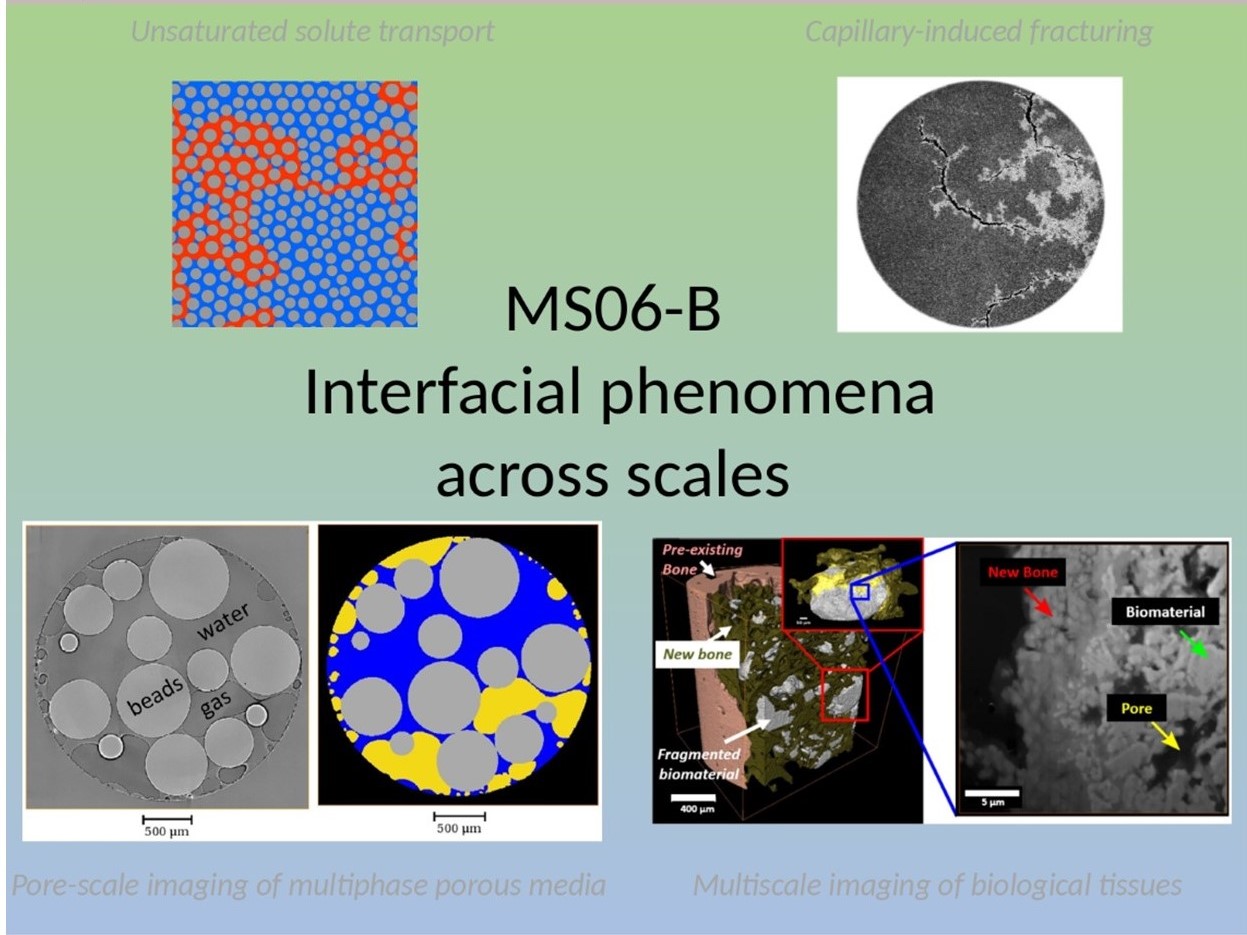
Lead Organizer: Ran Holtzman - Coventry University, UK
- Subhadeep Roy - Birla Institute of Technology & Science, India
- Sidian Chen - University of Arizona, USA
- Zuhao Kou - Columbia University, USA
- Ziqing Pan - Peking University, China
- Zhibing Yang - Wuhan University, China
- Rui Wu - Shanghai Jiao Tong University, China
- Hannah Menke - Heriot-Watt University, UK
- Mykyta Chubynsky - Coventry University, UK
- Oshri Borgman - Migal Galilee Institute, Israel
The existence of fluid-fluid and fluid-solid interfaces introduces a plethora of coupled physical, chemical, and biological phenomena which are key to multiphase flow in heterogeneous porous materials. While the interfaces are microscopic, they can control flows at the kilometer scale. The challenge of understanding the underlying rich physics is essential in many applications in geosciences and engineering. Examples range from small-scale industrial processes such as filtering, separation, coating or curing to large-scale transport of water, nutrients and contaminants in soils, extraction of hydrocarbons from and storage of carbon or energy in sediments, among others. We aim to bring together scientists across disciplines and with various expertise (numerical, experimental, and theoretical modeling) to share their state-of-the-art findings and challenges in this mini-symposium.
Solicted Speakers:
- Juan Hidalgo - Instituto de Diagnóstico Ambiental y Estudios del Agua (IDAEA)-CSIC, Spain: Stochastic modeling of bacterial transport and retention in porous media
- Sarah Perez - Heriot Watt University, UK: Pore-Scale Modelling and Simulation of Precipitation and Crystallization in Porous Media: Insights into Clogging Patterns for CO2 Mineral Trapping
- Ke Xu - Peking University, China: Boundaries regulates convection, dispersion and solid-liquid phase change in porous media under Rayleigh-Darcy convection
- Tomas Aquino - IDAEA-CSIC, Spain: Stochastic modeling of reaction at the fluid-solid interface
(MS07) Mathematical and numerical methods for multi-scale multi-physics, nonlinear coupled processes
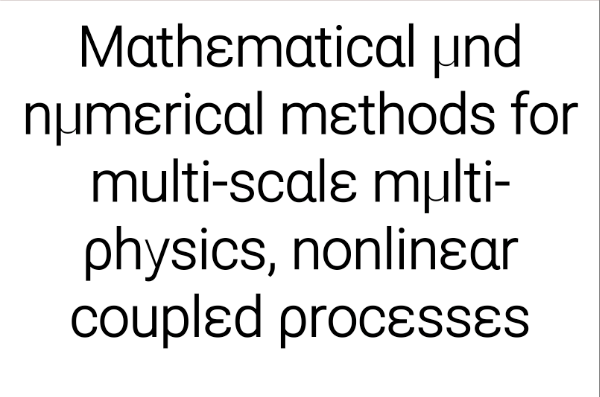
Lead Organizer: Jakub Both - University of Bergen, Norway
- Omar Duran - Stanford University, USA
- Nicolás Barnafi - Pontificia Universidad Católica de Chile, Chile
- Son-Young Yi - The University of Texas at El Paso, USA
- Sanghyun Lee - Florida State University, USA
Various applications of societal and technological relevance involve flow, (multi-phase) transport, deformation or reaction in natural (e.g. geological) or synthetic porous media. These applications are broad: from energy and environment to biosystems and high-tech materials. In many of these situations, experiments (or field observations) are either extremely costly (or even impossible) or they are required to be complemented with models and simulations. In this context, mathematical and numerical simulation methods are key tools for understanding processes as named above. When designing efficient simulation methods, at least two major challenges appear. The first is related to the fact that the mathematical models are coupled systems of highly nonlinear equations, and the second is due to the high complexity associated with porous media, e.g., highly heterogeneous properties with scale separation (often for fabricated porous materials) and without scale separation (often with natural real-world porous media). The dynamic coupling of processes taking place at different scales (from micro to macro) also motivates the needs to account for all such multiscale aspects in the development of accurate mathematical and numerical methods. In this mini-symposium, we invite contributions related to the development of “advanced mathematical models and related analyses” and “advanced numerical methods” including “advanced discretization methods” and “multiscale multilevel model order reduction techniques (multiscale methods, homogenization and upscaling, etc.) ”, “topological model reduction for embedded inclusions” (applied e.g. to fractures and wells), and “advanced nonlinear and linear solution strategies” for multi-scale, multi-component and multi-physics processes in porous media.
Solicted Speaker:
- Beatrice Riviere - University of Rice, USA: Topologically-reduced models of flows in porous media with inclusions
- Malgorzata Peszynska - Oregon State University, USA: Modeling processes in the Arctic from pore- to Darcy scale
- Marcio Murad - National Laboratory for Scientific Computation, Brazil: Pore-Scale Modeling and Relative Permeability Upscaling in Stress-Sensitive Fractured Porous Media
(MS08) Mixing, dispersion and reaction processes across scales in heterogeneous and fractured media
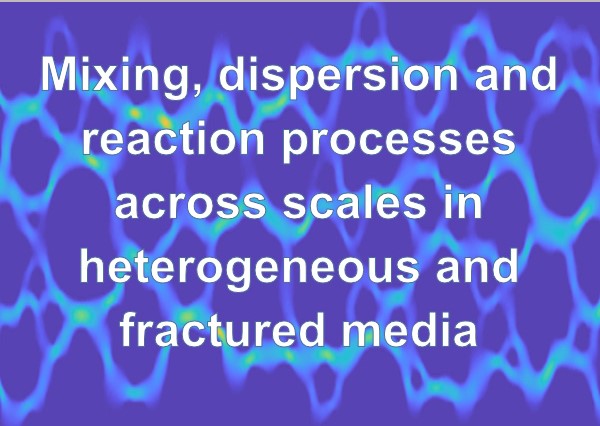
Lead Organizer: Marco Dentz - Spanish National Research Council, Spain
- Branko Bijeljic - Imperial College London, UK
- Mohammad Nooraiepour - University of Oslo, Norway
- Mozhdeh Sajjadi - University of Tehran, Iran
- Weiwei Zhu - Chinese Academy of Sciences, China
An in-depth understanding of solute mixing and reactive transport is key in engineered and natural porous media with applications ranging from the design of porous reactors to diffusion in human tissue to geothermal heat production and groundwater management. Spatial heterogeneity in pore and Darcy scale medium and flow properties leads to scale effects in system parameters (e.g., hydraulic conductivity, dispersion coefficients, chemical rate constants) and emerging large scale processes (e.g., anomalous diffusion, memory reactions, mechanical mixing) due to the interaction of small scale processes, segregation and mass transfer across heterogeneity-induced interfaces. Recent advances in experimental and theoretical approaches have shed new light into the pore and Darcy-scale mechanisms that govern these processes and their large scale quantification. This session addresses a diverse group of researchers investigating Eulerian and Lagrangian flow properties, solute and particle transport, and mixing and reaction phenomena under spatial heterogeneity in fluids at rest and under single, multiphase and variable density flows on the pore and Darcy scales. It aims to bring together experimental observations from the lab to the field scale with theory and numerical simulations to advance our understanding of heterogeneity-induced mixing, transport and chemical reaction dynamics over a large range of spatial and temporal scales.
(MS09) Pore-scale modelling
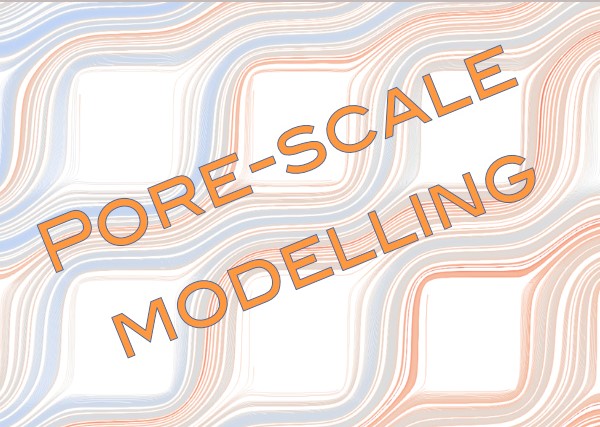
Lead Organizer: Ke Xu - Peking University, China
- Yu Qiu, Stanford University, USA
- Marco De Paoli, University of Twente, The Netherlands
- Benzhong (Robin) Zhao, McMaster University, Canada
- Zhenjiang You - China University of Petroleum-Beijing at Karamay, China
Modeling the physics of fluid flow and mechanical deformation is necessary to untangle the sequence of events that occurs within porous materials. Recent decades have shown a dramatic increase in interest to study and apply porous media science in various aspects of energy and environmental engineering. Groundwater remediation, geothermal energy, CO2 storage, natural gas recovery, and fuel cells are a few examples. Sustainable engineering of each one of these systems requires a microscale understanding with which one can make predictions. Pore-scale modeling is the tool to do just that. Here we solicit contributions on all aspects of pore-scale modeling with a particular emphasis on:
• novel algorithms and computational methods
• validation of models against experiments
• new physical insights and theoretical analyses
• upscaling pore-scale results into continuum-scale descriptions
Examples of specific areas include – but are not limited to – numerical methods (pore networks, lattice Boltzmann, direct numerical simulation, phase field, level set), discretization (finite volume, finite element, finite difference, particle-based), flow physics (Newtonian, non-Newtonian, single/multi-phase), passive/reactive transport (dissolution, precipitation, dispersion, mixing), mechanics (discrete element, failure, granular flow, plasticity), solvers and approximators (multiscale methods), hybrid computing (pore-to-Darcy coupling, addressing scale separation).
Solicted Speakers:
- Davide Picchi - University of Brescia, Italy: Pore-scale study of an elongated bubble moving through a shear-thinning fluid
- Yves Méheust - Géosciences Rennes (UMR CNRS 6118) and Univ. Rennes 1, France: Depth-integrated model of immiscible two-phase flow in open rough fractures
- Laurez Maya - (BRGM - ISTO), France: Particulate transport in porous media at pore-scale
(MS10) Advances in imaging porous media: techniques, software and case studies

Lead Organizer: Lin Ma - University of Manchester, UK
- Liwei Zhang - Chinese Academy of Sciences, China
- Maja Rucker - Eindhoven University of Technology, The Netherlands
- Sidian Chen – Stanford University, USA
- Qinhong Hu - China University of Petroleum (East China), China
In the last decades, multi-scale 2D/3D/4D imaging techniques have developed rapidly and become increasingly appliable in porous material characterization. Many advanced imaging techniques, such as X-ray Computed Tomography (XCT), Electron Microscope Tomography (EMT), Laser Scanning Microscopy (LSM), Magnetic Resonance Imaging (MRI) and Scanning Transmission X-ray Microscopy (STXM), have been developing at a high speed both on the hardware and the software side. Furthermore, the increasing utilisation and development of synchrotron, neutron and muon sources have provided excellent opportunities to advance the imaging techniques. Because of the development and their added value, they are intensively used to study porous media for their characterisation and quantification as well as to study the various dynamic processes occurring inside porous media, providing unique perspectives in porous materials studies. For this mini-symposium we invite contributions that focus on advancements in 2D, 3D and 4D imaging techniques or imaging analysis software to study porous media as well as contributions that integrate these new developments in experiments and real case-studies.
(MS11) Microfluidics and nanofluidics in porous systems
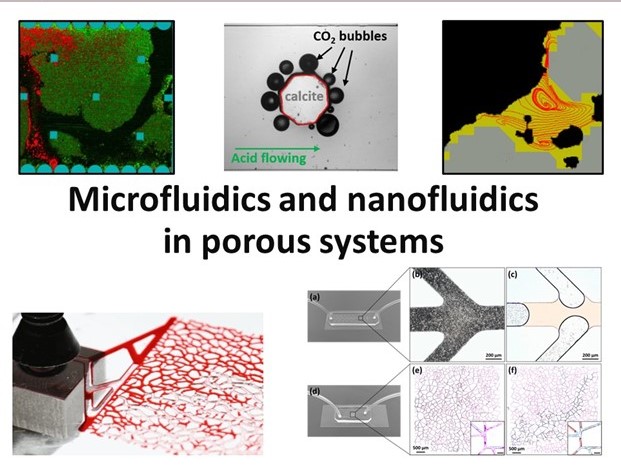
Lead Organizer: Yaniv Edery - Technion - Israel Institute of Technology, Israel
- Shima Parsa - Rochester Institute of Technology, USA
- Hossein Hejazi - University of Calgary, Canada
Microfluidic systems have revolutionized our understanding of pore-scale processes, offering high-precision investigations within picoliter to nanoliter fluid volumes. These systems operate within controlled geometries and physiochemical properties, such as size and wettability, providing an ideal platform for studying complex media, including those that mimic porous materials. This area of research requires detailed pore scale modeling and scaling that has significant implications for improving large-scale, continuum-based models like Darcy's law, whose limitations have been increasingly challenged by microscale studies. The symposium aims to convene experts focused on leveraging microfluidics to investigate pore level events through experiments, modeling, and scaling. The objective is to enhance our grasp of their broader impacts on phenomena such as solute mixing, reactive transport, multiphase flow, electrokinetic effects in charged systems, colloid transport and filtration, as well as the growth of microorganisms and formation of mineral aggregates.
Solicted Speaker:
- Wen Song - University of Texas Austin, USA: Rock microfluidics under pressure: enabling geochemical observations at subsurface conditions
- Peter K. Kang - University of Minnesota, USA: Inertia effects on mixing and reactive transport in porous and fractured media
(MS12) Advances in Computational and Experimental Poromechanics
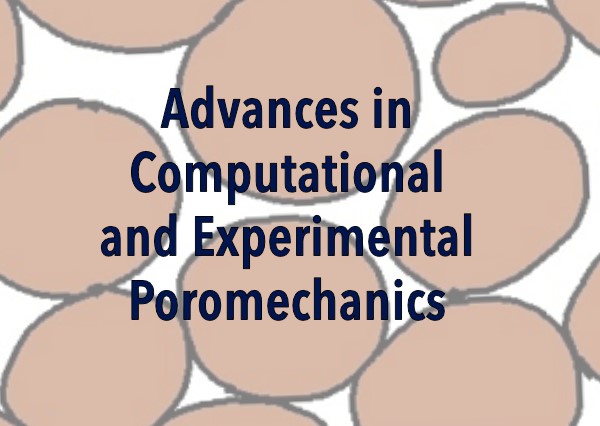
Lead Organizer: Jianchao Cai - China University of Petroleum, China
- Amir H. Haghi - CGG, Canada
- Florin A. Radu - University of Bergen, Norway
- Saman Aryana - University of Wyoming, USA
- Nicola Castelletto - Lawrence Livermore National Laboratory, USA
In the past decade, numerical simulation and experimental characterization of physical interactions between mechanical deformation and fluid flow in porous media (i.e., poromechanical interaction) have become increasingly crucial in several branches of technology and natural sciences. Poromechanical interaction is a ubiquitous phenomenon in nature, and it has a prominent influence on fluid transport via living cells and tissues, plant movements, and magma propagation. Among typical societal relevant applications of poromechanics, we mention geothermal energy extraction, CO2 sequestration, energy subsurface storage, hydraulic fracturing, and cancer research. In this mini-symposium, we will address recent developments in numerical solvers for poromechanics, e.g. iterative and monolithic schemes, multigrid, efficient preconditioners and (stable/multiscale/mass conservative) discretization methods. At the same time, new trends in the mathematical modelling of poromechanics will be discussed. Especially, non-linear or non-stationary extensions of Biot equations, multiphase and reactive flow in deformable porous media, thermo-poroelasticity and the inclusion of fractures will be of interest. In addition, this mini-symposium will highlight experimental advances in poromechanics using creative laboratory designs and advanced visualization approaches (e.g., integrated scanning, in-situ heating, and triaxial loading tests) under complex thermo-hydro-mechanical conditions. These experimental observations aim to improve our understanding of the poromechanical controls on single-phase and multiphase fluid flow in natural and artificial (3D printed, microfluidics) porous materials and fractures.
(MS13) Fluids in Nanoporous Media
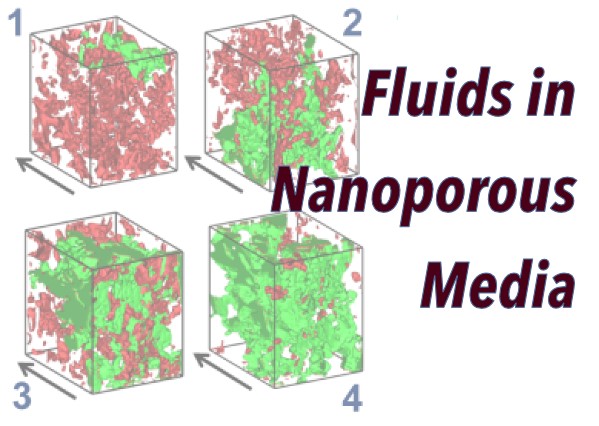
Lead Organizer: Bin Pan - China University of Petroleum (Beijing), China
- Shaina Kelly - Columbia University, USA
- Yunfeng Liang - University of Tokyo, Japan
- Hassan Mahani - Sharif University of Technology, Iran
- Yun Yang - Los Alamos National Laboratory, USA
- Mingshan Zhang - Yanshan University, China
- Sen Wang - China University of Petroleum (East China), China
Many porous media have characteristic pore sizes in the nanometer range. These media include natural materials (clays, coal, and shale), concrete, as well as synthetic materials used for separation, purification, and energy storage. In most natural or technological processes the pores in these materials contain fluids: water in clays and concrete, hydrocarbons in coal and shale, etc. In nanopore-confined fluid, tight spatial confinement and solid-fluid interactions may significantly alter the fluid's physical properties, causing, for example, the molecular structuring of the fluid, shifts of the freezing or evaporation points and the appearance of the disjoining pressure. These pore-scale effects necessarily lead to a change in the parameters of continuum models for fluid transport in nanoporous media and poromechanics; moreover, they often require introducing new physics in the governing equations. The objective of this minisymposium is to provide a forum for the discussion of all possible aspects of fluid phases confined in nanoporous materials: fundamental and applied, theoretical and experimental.
Solicited Speakers:
- Patrick Huber - Hamburg University of Technology, Germany: BlueMat: Water-Driven Nanoporous Materials
- Zhehui Jin - University of Alberta, Canada: Microscopic Origin of Hysteresis in CH4 Sorption-Induced Deformed Coal Matrix: Insights from Stepwise Hybrid GCMC/MD Simulations
(MS14) Uncertainty Quantification in Porous Media
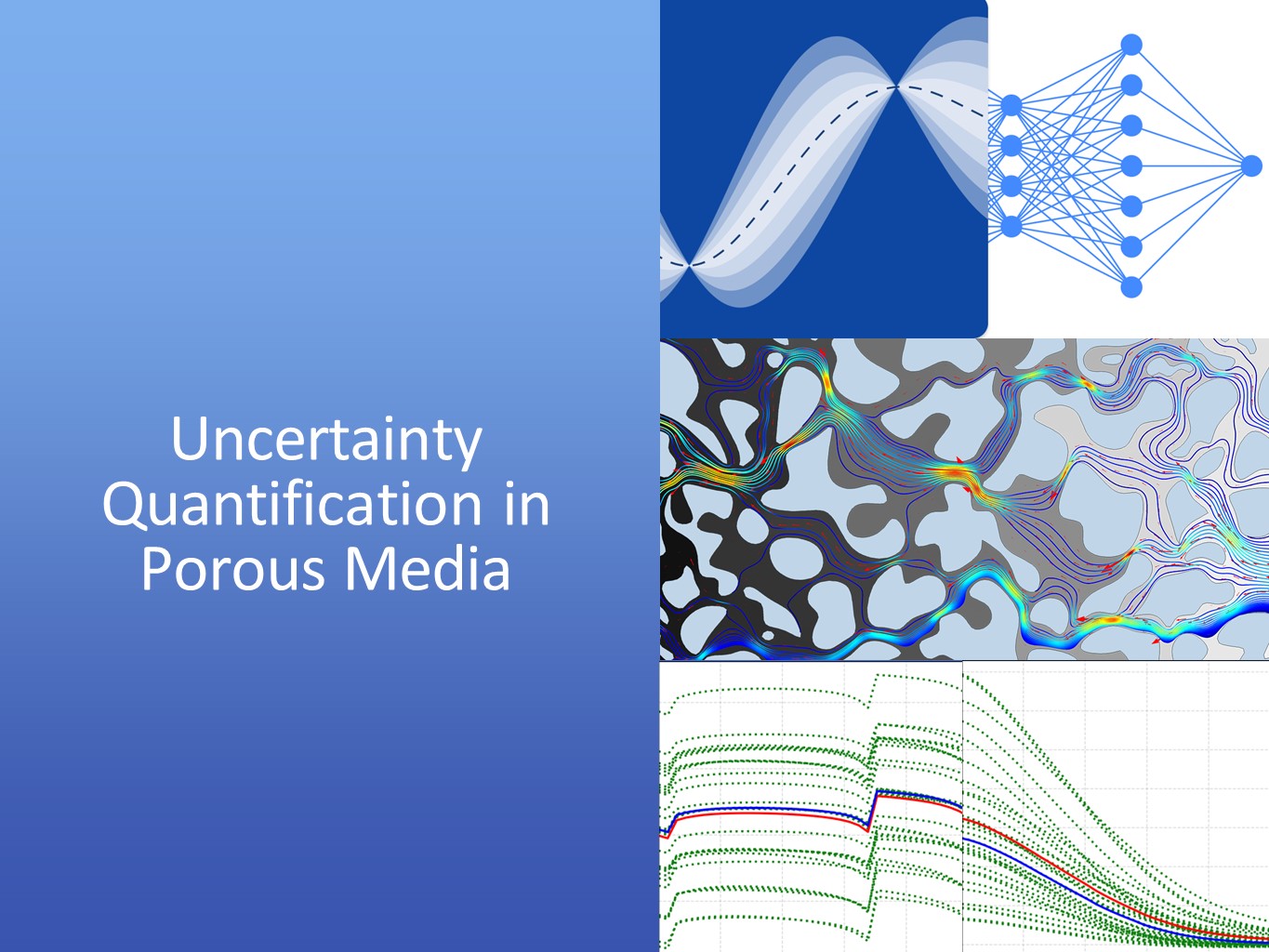
Lead Organizer: Ben Mansour Dia - King Fahd University of Petroleum and Minerals, Saudi Arabia
- Sarah Perez - Heriot-Watt University, UK
- Rodrigo Weber dos Santos - Federal Univ. of Juiz de Fora, Brazil
- Valentina Ciriello - University of Bologna, Italy
The goal of this mini-symposium (MS) is to create a forum for discussion of common themes that arise in forward and inverse uncertainty quantification methods for porous media. The MS highlights the formalization of imprecise mathematical models into high-dimensional probabilistic models and the development of cutting-edge stochastic numerical methods to address high public-value problems challenged by computer model uncertainty. We invite contributions on a range of topics, including but not limited to data-driven mathematics, multiscale methods, upscaling uncertainty methods, probabilistic learning, and speed-up computational methods related to UQ such as Multilevel Monte Carlo, surrogate modeling. Special interest is given to contributions with direct applications to groundwater modeling, multiphase flow in porous media, reactive flow, geophysics.
(MS15) Machine Learning and Big Data in Porous Media

Lead Organizer: Shuyu Sun - King Abdullah University of Science and Technology, Saudi Arabia
- Bailian Chen - Los Alamos National Laboratory, USA
- Huangxin Chen - Xiamen University, China
- Yalchin Efendiev - Texas A&M University, USA
- Ahmed H. Elsheikh - Heriot-Watt University, UK
- Cunqi Jia - The University of Texas at Austin, USA
- He Liu - China National Petroleum Corporation, China
- Xueying Lu - The University of Texas at Austin, USA
- Kai Zhang - Qingdao University of Technology, China
- Tao Zhang - China University of Petroleum (East China), China
Recent advances in computer and data sciences have made machine learning (ML) techniques a frontier in porous media-related research. As a result, classical challenges in porous media are being addressed with new techniques based on ML. The aim of this mini-symposium is to present the recent results of new ML methods and introduce new directions in porous media-related research to researchers in our community. This session seeks abstracts in the following topics: 1) recent advances in ML algorithms (including deep learning architectures, physics-informed ML, self-supervised/un-supervised ML, transferability, interpretability) with applications to porous media; 2) development of computationally fast proxy models, reduced order models or predictive empirical models using ML to address issues of interest in porous media; 3) other ML-/big data-related applications or developments (e.g., upscaling, multiscale analysis, porous media generation, imaging analysis, coupled processes) in porous media.
(MS16) Fluid Interactions with Thin Porous Media
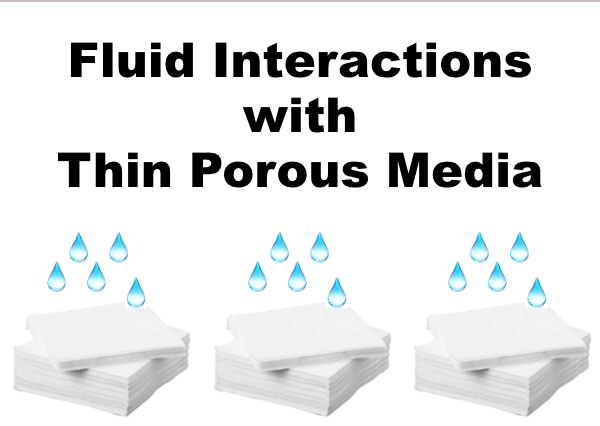
Lead Organizer: Richmond Cohen - Kimberly-Clark Corporation, USA
- Dwayne Jackson - Kimberly-Clark Corporation, USA
- Satoru Katoh - Toyota Central R&D Labs, Japan
- Nicolae Tomozeiu - Canon Production Printing B.V., The Netherlands
- Chaozhong Qin - Chongqing University, China
Thin porous media are extensively used in the paper industry, fuel-cell development, printing technologies, packaging, etc. Their diversity, considering structure, composition, physico-chemical properties, as well as their interactions with fluids are of current interest for both fundamental understanding and industrial applications. Processes such as liquid imbibition, drying, nanoparticle transport into thin porous media structures and clogging, plus water purification, are examples of where greater fundamental understanding is needed. In this mini-symposium, we call for papers that focus on fluid transport through thin porous media considering evaporation, spreading, absorption, diffusion, capillary suction, and clogging processes, while the media may deform due to swelling processes. The topics of this mini-symposium include different aspects of Thin Porous Media including thin fibrous and granular porous media, liquid spreading, absorption/diffusion, mechanisms of liquid imbibition/drying, surface modification of fibers and their implications on liquid transport, hydro-expansion and dimensional stability in the presence of moisture, and process modeling to the real industrial applications.
High Porosity sub-session
High-porosity porous media, with porosity of more than 70-80%, have a wide range of existing and promising uses in consumer goods, aerospace, and industrial applications (as filter media, heat exchangers, and catalysts). These porous media are typically metal or polymer foams or fibrous nonwoven materials. In such porous media, the flow behavior and thermodynamics are frequently quite different than those in low-porosity porous media. Further, assumptions and experimental systems used for low-porosity porous media may not be suitable. This session invites both modeling and experimental studies aimed at advancing our understanding of such high-porosity porous media and highlighting its novel applications.
(MS17) Complex fluid and Fluid-Solid-Thermal coupled process in porous media: Modeling and Experiment
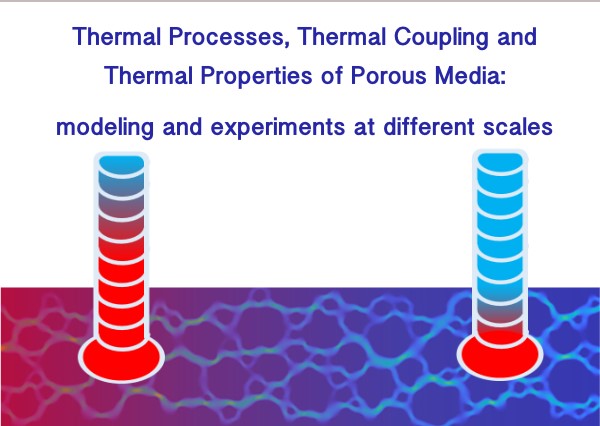
Lead Organizer: Yingfang Zhou - University of Aberdeen, UK
- Praveen Linga - National University of Singapore, Singapore
- Shimin Liu - Pennsylvania State University, USA
- Moran Wang - Tsinghua University, China
- Ruina Xu - Tsinghua University, China
- Shuxin Pan – PetroChina, China
- Pål Ø. Andersen – University of Stavanger, Norway
Fluid-solid-thermal coupled process in porous media play an important role in numerous applications, including unconventional energy resources extraction, energy storage, environments, industrial materials such as isolators, aerospace, and medical engineering. The scope of this mini-symposia covers all studies which deal primarily on complex fluids and fluid-solid-thermal aspects of porous media, fluid-solid interaction, thermal coupling, and property measurements in a multidisciplinary nature of analyses, modeling, experiment and field studies. We also include challenging fields such as geo-energy and geo-environment systems as well as insulation materials under extreme conditions.
(MS18) Innovative Methods for Characterization, Monitoring, and Remediation of Contaminated Soils and Aquifers
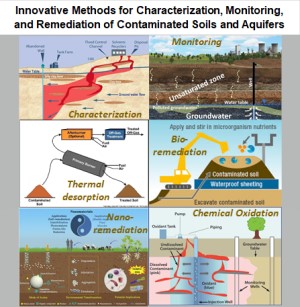
Lead Organizer: Christos Tsakiroglou - Foundation for Research and Technology Hellas, Greece
- Bo Guo – University of Arizona, USA
- Xiaopu Wang – China University of Petroleum (East China), China
- Sagyn Omirbekov – Nazarbayev University, Kazakhstan
The efficacy of methods used for the characterization, monitoring, and remediation of contaminated soils and aquifers is unavoidably associated with the multi-scale properties of unsaturated and saturated zones. The development of innovative, and cost-effective methods for (i) mapping and monitoring polluted soils and surface emissions from spread pollutants, and (ii) soil and aquifer ex situ or in situ remediation rely on information resulting from lab-, pilot-, and field-scale tests along with process modeling and simulation in porous media. Toward this direction, earlier and new knowledge concerning the multiphase and multi-component transport and reactive processes in multi-scale porous media must be handled in the light of interdisciplinary approaches (e.g. geology, chemistry, chemical engineering, physics, etc.) for understanding, analyzing, and modeling the complex processes involved. For this mini-symposium, we invite lab- and pilot-scale experimental approaches, field-scale case studies, and numerical simulations that focus on the development, application, and interpretation of innovative techniques for the characterization / monitoring / remediation (e.g. biological treatment, thermal treatment, advanced oxidation, electro-remediation, nanoremediation, hybrid technologies, etc.) of soils and aquifers at a broad hierarchy of scales ranging from the pore- to the field-scale.
(MS19) Elastic, electrical, and electrochemical processes and properties in porous media
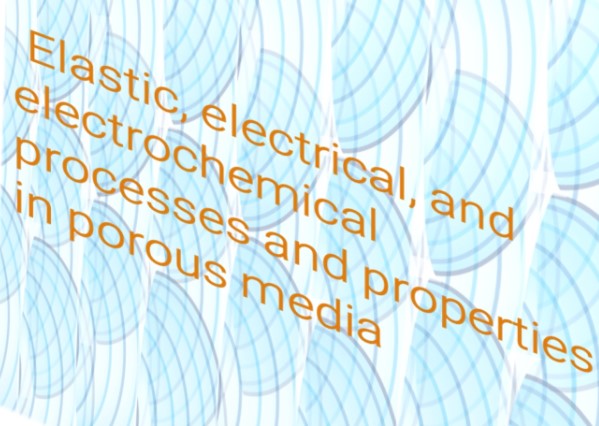
Lead Organizer: Pablo Garcia Salaberri - University Rey Juan Carlos (URJC), Spain
- Jennifer Johnstone-Hack - University of Sheffield, UK
- Prodip K. Das - The University of Edinburgh, UK
- Maxime van der Heijden - University of Waterloo, Canada
- Mayank Sabharwal - University of Calgary, Canada
- Chung Hyuk Lee - Toronto Metropolitan University, Canada
- Yuqi Wu - China University of Petroleum (East China), China
- Cunqi Jia - University of Texas at Austin, USA
Wave propagation, electron transport and electrolyte flow through porous media are found in many fields of science and technology, ranging from petroleum, chemical and construction engineering, to cell, earth and materials science. Thus, it is of great significance to understand elastic, electrical and electrochemical processes and properties in porous media. In this mini-symposium, attention is devoted to new developments in characterization methods and modeling techniques addressing state-of-the-art challenges in elasticity, electrical engineering and electrochemistry in porous media. Research includes fundamental work of pore-scale transport processes at the microscopic scale as well as the study of effective properties at the macroscopic scale. Thus, this mini-symposium aims to provide a venue for scientists and engineers to discuss recent advances in wave propagation, electron transport, electrolyte flow, and electrochemical processes in porous media, elastic and electrical properties of porous materials, and their applications in diverse fields. The list of topics includes, but is not limited to, theoretical and computational modeling, and in-situ and ex-situ experiments.
Solicited Speaker:
- Siddharth Komini Babu - Los Alamos National Laboratory, USA: Impact of Diffusion Media on Performance and Durability in Electrochemical Systems
(MS20) Biophysics of living porous media
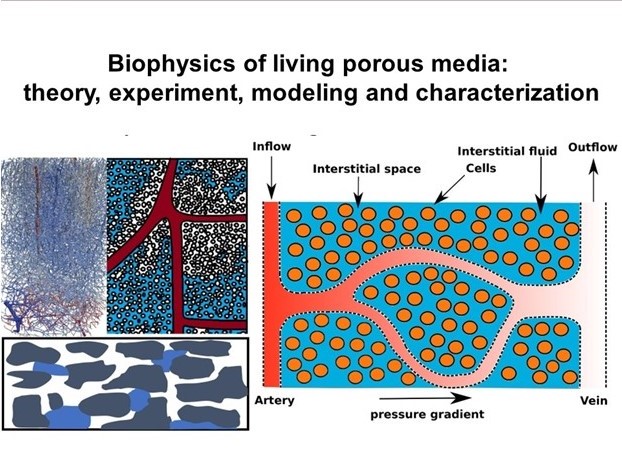
Lead Organizer: Amir Pahlavan - Yale University, USA
- Joaquin Jimenez-Martinez - ETH Zurich, Switzerland
- Eleonora Secchi - ETH Zurich, Switzerland
- Judy Yang - University of Minnesota, USA
- Igor Chernyavsky - University of Manchester, UK
- Giuseppe Sciume - University of Bordeaux, France
- Raghu Krishna Moorthy - University College Dublin, Ireland
- Olga Barrera - Oxford Brooks University, UK
- Kamaljit Singh - Heriot- Watt University, UK
This session focuses on the fascinating world of living porous media, where biological systems and complex porous environments interact and evolve. From microbial communities to multicellular organisms, we explore how living systems such as bacterial colonies, biofilms, plant roots, fungi, tissues, and even ant colonies adapt to and shape their porous habitats under dynamic physical and environmental stresses. Discussions will span scales, from microvasculature and cardiovascular networks to soil ecosystems and engineered biological systems, revealing how transport, flow, and structure co-evolve in these living, dynamic networks.
Solicted Speaker:
- Jean-François Louf - Auburn University, USA: Growth of Physarum polycephalum under confinement
(MS21) Non-linear effects in flow and transport through porous media
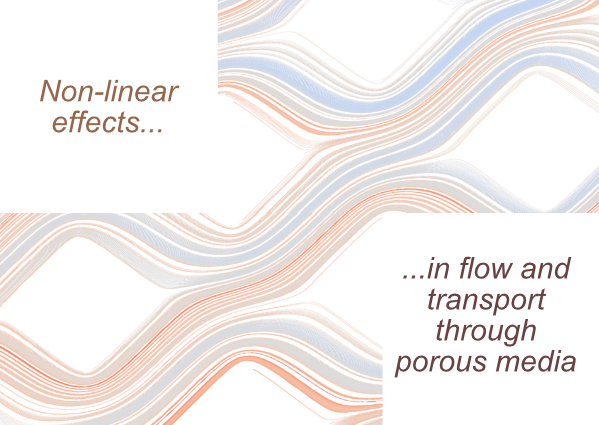
Lead Organizer: Mohaddeseh Mousavi Nezhad - University of Liverpool, UK
- Diogo Bolster - University of Notre Dame, USA
- Alberto Guadagnini - Politecnico di Milano, Italy
- Yves Méheust - Université Rennes, France
- You Zhenjiang - China University of Petroleum - Beijing at Karamay, China
Non-linear effects on fluid flow and chemical transport in porous media are critical across various disciplines and applications. Inertial terms in the Navier-Stokes equations become significant in highly permeable porous media, such as river sediments, urban canyons, catalytic beds, and nuclear reactors. Non-Newtonian rheologies, with their non-linear stress-shear rate relationships, are crucial for applications like polymer slug remediation of NAPL-polluted aquifers, enhanced oil recovery, and subsurface characterization. These effects also impact vadose zone remediation, drilling mud applications, and industrial processes like polymer composites.
The complexity of multi-scale heterogeneous structures in subsurface environments poses challenges for modeling macro-scale behavior. Detailed pore-scale simulations and experiments at relevant scales, combined with advanced visualization techniques (e.g., PIV, X-ray tomography), are essential for understanding these systems. Non-linear mixing processes occur at small scales, complicating the quantification of physical and chemical interactions, which requires improved upscaling techniques.
This mini-symposium seeks to address the impact of non-linearities on flow and transport in porous and fractured media, with a focus on translating theoretical and experimental insights into practical applications. We welcome contributions from theoretical/numerical studies, laboratory experiments, and field investigations across a broad range of scales and applications, as well as discussions on modern modeling strategies.
(MS22) Advances in Porous Materials: Design, Characterization, and Applications
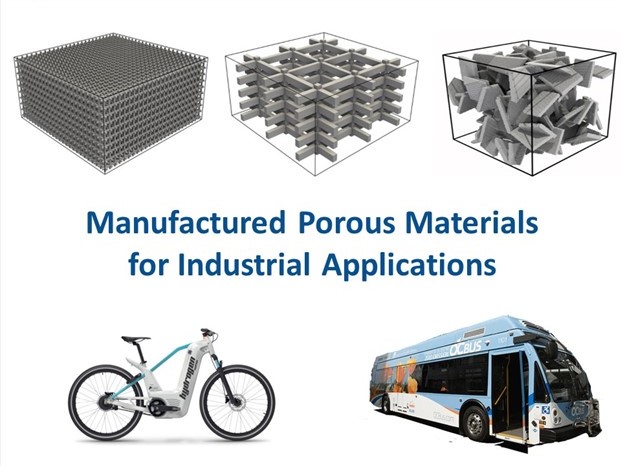
Lead Organizer: Senyou An - Shenzhen University, China
- Vahid Niasar - The University of Manchester, UK
- Oleg Iliev - Frauenhofer Institute for Industrial Mathematics, Germany
- Daniel Niblett - Newcastle University, UK
Porous materials are key components in many industrial applications where the porous microstructure controls fluid dynamics, reaction, heat transfer and mechanical properties such as in catalysts (e.g., for chemical synthesis), fibrous materials (e.g., for paper production), membranes (e.g., for desalination), adsorbents (e.g., for environmental cleanup), porous ceramics (e.g., for filtration and insulation), metal-organic frameworks (MOFs) (e.g., for gas storage and separation), aerogels (e.g., for lightweight thermal insulation), porous electrodes (e.g., for fuel cell and battery), and polymeric foams (e.g., for bioengineering). Depending on the application, these porous materials are designed, fabricated, or modified to meet specific objectives and are even integrated with designed manifolds for flow distribution. The science of porous media, applicable to physical and chemical processes in geosystems, can also be extended to other engineering applications.
Recent advancements, particularly with the integration of AI technologies, have propelled the design, characterization, and manufacturing of synthetic porous materials. These innovations have expanded the capabilities of materials to achieve finer control over pore size, distribution, and connectivity, which are crucial for enhancing performance across different applications.
This minisymposium aims to create a collaborative platform for researchers, scientists, and engineers to share their insights, challenges, and breakthroughs in the development of porous materials. The focus is on exchanging knowledge related to the design, characterization, and fabrication processes across diverse disciplines, such as energy storage, separation technologies, environmental applications, and beyond. Participants are encouraged to present case studies that highlight both successes and challenges, offering valuable lessons in understanding the capabilities of porous materials and identifying critical gaps in fundamental porous media knowledge.
(MS23) Advances in Experimental, Computational, and Analytical Approaches for Underground Hydrogen Storage

Lead Organizer: Cunqi Jia - The University of Texas at Austin, USA
- Kamy Sepehrnoori - The University of Texas at Austin, USA
- Bo Ren - Aramco Servies Company, USA
- Lei Zhang - China University of Petroleum, USA
Hydrogen, as an energy carrier, is poised to contribute significantly to meeting net-zero emission targets and global decarbonization. Underground hydrogen storage (UHS) is a promising option for fully realizing hydrogen potential as an alternative energy source to balance seasonal availability with irregular demand. During the UHS process, the hydrogen is injected into the underground formations, such as depleted gas/oil reservoirs, saline aquifers, or salt caverns, during an excess supply of energy and then withdrawn during the seasonal high demand, to be converted into industrial supplies or used directly as a fuel. This section aims to collect potential proposals that address advanced experimental, computational, and analytical approaches and applications for UHS in any geological storage types. Potential topics of interest include, but are not limited to, the following:
1. Determination of the physical properties of hydrogen and hydrogen-mixed systems.
2. In-situ hydrogen injection and withdrawn cycling experimental studies.
3. Estimation of hydrogen storage and recovery capacity in different underground formations.
4. Risk control and safety analysis of UHS operation and implementation process.
5. Life-cycle investigation of the sustainability and economic viability of UHS systems.
6. Related other underground storage topics (e.g., underground gas storage and CCUS).
(MS24) Molecular Modelling in Porous Media
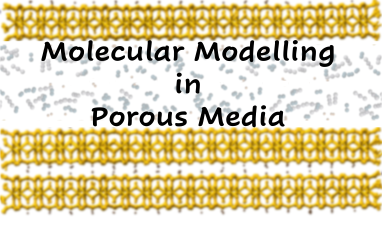
Lead Organizer: Mehdi Ghasemi - University of Manchester, UK
- Muhammad Sahimi - University of Southern California, USA
- Mohamed Mehana - Los Alamos National Lab, USA
- Jessica Rimsza - Sandia National Laboratories, USA
- Sina Omrani - University of Manchester, UK
This minisymposium focuses on the application of molecular modelling to simulate and predict the behavior of molecules and molecular systems in fields such as subsurface engineering, geosciences, environmental engineering, materials science, and chemical engineering. By leveraging principles from physics, chemistry, and computer science, molecular modeling allows scientists to study complex molecular structures and their interactions with unprecedented detail and accuracy. This minisymposium will convene researchers focused on advancing molecular modeling in porous media, including exploring its integration into larger-scale investigations. Porous mediums are inherently complex systems characterized by heterogeneity across multiple scales. This complexity profoundly influences the behavior of fluids and chemicals within them, challenging our understanding of associated phenomena. At larger scales macroscopic approaches often oversimplify interactions and transport phenomena, leading to discrepancies between theory and observed behavior. The diverse pore structures, surface chemistries, and dynamic interactions within porous media contribute to these ambiguities, emphasizing the critical role of molecular modeling techniques such as molecular dynamics (MD), Monte Carlo (MC) simulations, and density functional theory (DFT) as nanoscale-based techniques to unravel these complexities. In addition, molecular modeling can bridge the gap between theory and experimentation by uncovering detailed molecular-level insights.
Solicited Speaker:
- David Sholl - Oak Ridge National Laboratory, USA: Developing Effective Sorbents for Direct Air Capture using Large-scale DFT Calculations and ML Forcefields
- Jeffery Greathouse - Sandia National Laboratories, USA: Molecular Modeling of the Structure and Dynamics of Nanoconfined Fluids
(MS25) Advances in Carbon Mineralization: Unveiling Multiscale Geo-processes and Coupled Mechanisms

Lead Organizer: Peter K. Kang - University of Minnesota, USA
- Juerg Matter - University of Southampton, UK
- Todd Shaef - Pacific Northwest National Laboratory, USA
- Weon Shik Han - Yonsei University, South Korea
- Megan Smith - Lawrence Livermore National Laboratory, USA
In situ carbon mineralization — a method that sequesters CO2 by transforming it into solid carbonate minerals — is considered a promising strategy for carbon management. The focus of this session is on experimental, theoretical, and numerical advances necessary to successfully implement carbon mineralization. We invite abstract submissions that shed light on the critical processes involved in mineral dissolution and precipitation across spatial scales, from the pore to reservoir scales. An area of particular interest is studies that elucidate how coupled processes in fractured porous media affect carbon mineralization.
We encourage contributions that:
• Demonstrate how microscopic processes (e.g., mineral dissolution, nucleation-driven precipitation, alterations at water-mineral interfaces, reaction-driven cracking, surface passivation) affect mineral precipitation.
• Establish the role of secondary minerals for carbon mineralization, including but not limited to, their impact on the nature of mineralization products, their formation during mineralization, and resulting impacts on porosity, permeability, and injectivity.
• Employ high-resolution imaging techniques and numerical simulations to elucidate key processes governing mineral dissolution and precipitation.
• Interrogate subsurface fluid flow regimes for carbon mineralization processes in both aqueous dominated and water-lean systems
• Improve understanding of the interplay between geochemical, geomechanical and/or hydraulic feedback mechanisms within the context of carbon mineralization.
• Apply modeling tools (e.g., machine learning, reduced order modeling, discrete fracture networks) for characterizing mineral dissolution and precipitation.
Solicited Speakers:
- Shaina A. Kelly - Columbia University, USA: Towards relative permeability-mineralization paradigms in vesicular basalt pore systems
- Benjamin M. Tutolo - University of Calgary, Canada: Strategies for overcoming the challenge of gigaton-per-year basalt carbonation
(MS26) Mechanisms Across Scales in Subsurface CO2 storage: A Special Session in Honor of Sally Benson

Lead Organizer: Anna Herring - University of Tennessee, USA
- Maartje Boon - University of Stuttgart, Germany
- Sam Krevor - Imperial College London, UK
- Franklin M. Orr Jr - Stanford University, USA
Geologic carbon storage is a linchpin in the suite of technologies needed to combat climate change and enable a green energy transition. Our ability to deploy carbon storage operations relies on accurate prediction of the flows of supercritical CO2 and brine within porous geologic media; systems embodied by complex, coupled physio-chemical processes that span vast time and length scales. Understanding these multiscale interactions requires a combination of experimental, simulation, and theoretical analysis; extending from pore-scale investigations to field studies in real reservoirs.
This mini-symposium is inspired by the contributions of Professor Sally Benson - researcher, educator, mentor, advisor to the U.S. President, and recipient of the InterPore Society Honorary Lifetime Membership Award in 2024. Prof. Benson has pioneered several areas of research which have developed into themes in porous media research now investigated around the world. This includes understanding the impacts of small, centimeter-scale, rock heterogeneities on field-scale carbon dioxide flow, the nature of relative permeability and hysteresis for CO2-brine systems, mitigation strategies for non-conformal CO2 movement and leakage, and the role that mass transfer processes like Ostwald ripening or dissolution in heterogeneous rocks may have on the long-term stability of carbon storage.
We invite submissions that highlight multiscale and/or multimodal investigations into multiphase flows in geologic systems, particularly for energy-forward applications. Demonstrations of innovative methods (e.g. new field-scale characterization techniques, applications of machine learning to reservoir simulation) are also encouraged.
Solicited Speakers:
- Charlotte Garing - University of Georgia, USA: Impact of Ostwald ripening on the stability of capillary-trapped CO2: a retrospective
- Gege Wen - Imperial College London, UK: CO2 Geological Storage Modeling with Machine Learning
- Christopher Zahasky - University of Wisconsin-Madison, USA: Sub-core Permeability Inversion of Sedimentary Rocks using Positron Emission Tomography Data—Sally’s Vision 10 Years in the Making
